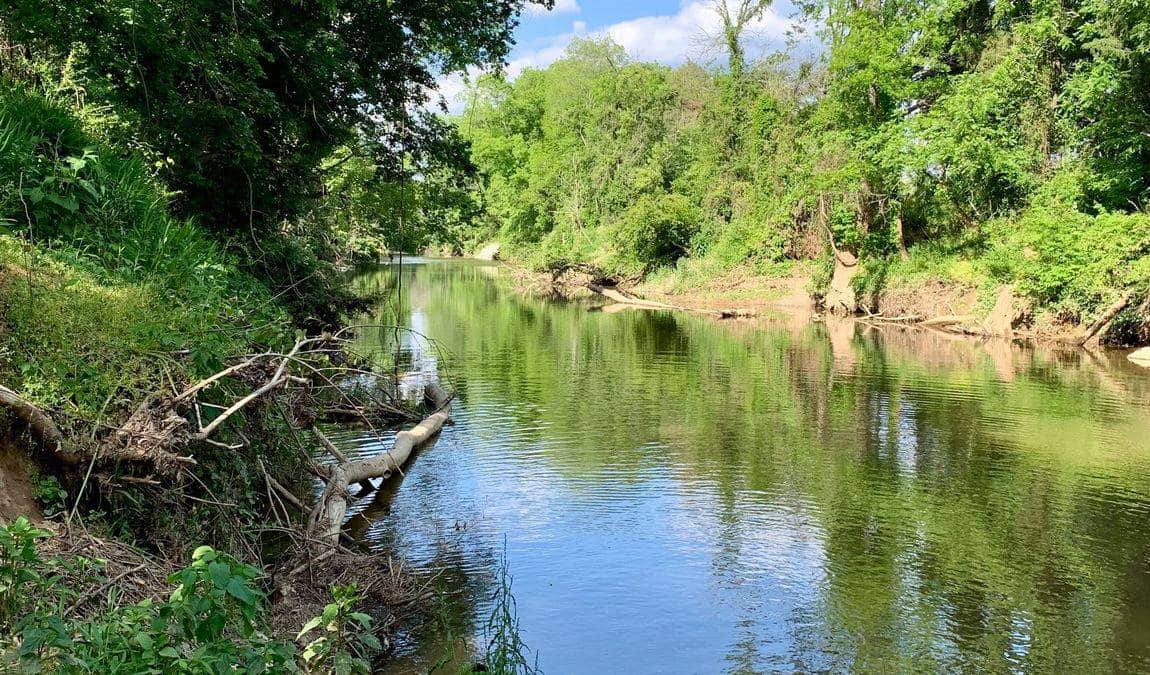Walnut Creek Wetland Park is a vibrant oasis in the heart of Raleigh, North Carolina. This 58-acre sanctuary is more than just a pretty face; it plays a crucial role in the community by providing a habitat for diverse flora and fauna and a natural flood management system. Wetlands are nature's kidneys, filtering pollutants and safeguarding our water supply. As you explore the park, you'll discover its rich history and the community's dedication to preserving this vital ecosystem. So, lace up your boots and prepare to embark on an adventure that promises fun and learning!
Highlights
- Ecological Significance: The park is a biodiversity hotspot home to 213 species of plants and numerous wildlife.
- Community Engagement: The Dr. Norman and Betty Camp Education Center offers educational programs and activities for all ages.
- Recreational Opportunities: Enjoy trails, boardwalks, and observation decks that provide stunning views of the wetlands.
Contents
 Photo: pejraleighnc.org
Photo: pejraleighnc.org
Here is Why Your Kids Will Find it Interesting
Walnut Creek Wetland Park is worth visiting with kids aged 5 to 12. The park offers interactive exhibits and hands-on activities that make learning about nature thrilling. From spotting great blue herons to exploring muddy trails, children will find endless opportunities to connect with the environment. Plus, the park's educational programs are designed to inspire young minds and foster a love for the natural world.
Family-friendly Features
- Interactive Exhibits: Engaging displays that educate and entertain children.
- Nature Trails: Safe and accessible paths for family walks and wildlife spotting.
- Picnic Areas: Perfect spots for enjoying a family meal amidst nature.
History and Background
 Photo: facebook.com/walnutcreekwetlandcommunitypartnership
Photo: facebook.com/walnutcreekwetlandcommunitypartnership
The history of Walnut Creek Wetland Park is a testament to the power of community and perseverance. Initially a natural treasure, the area suffered neglect and pollution until the community rallied to restore it. The park now serves as a buffer against flooding and pollution, absorbing stormwater runoff and protecting nearby neighborhoods. The transformation of this area reflects the community's commitment to environmental stewardship and resilience.
Dorothea Dix Park is 4 km away, which is also always enjoyable and fun for children.
Ecological and Environmental Importance
 Photo: facebook.com/walnutcreekwetlandcommunitypartnership
Photo: facebook.com/walnutcreekwetlandcommunitypartnership
Walnut Creek Wetland Park is a haven for biodiversity, home to many flora and fauna. The wetlands provide essential ecological functions, such as water filtration and habitat for wildlife. Efforts to restore native plants and manage invasive species are ongoing, ensuring the park remains a thriving ecosystem. The park's flood mitigation and pollution control role underscores its importance to the community and the environment.
Community Involvement and Education
The Dr. Norman and Betty Camp Education Center is the heart of Walnut Creek Wetland Park community engagement. Through partnerships with local organizations and schools, the center offers programs that educate and inspire visitors of all ages. The education center fosters a sense of connection and responsibility towards the environment, from workshops on wetland ecology to hands-on activities for children.
Park Features and Amenities
 Photo: facebook.com/walnutcreekwetlandcommunitypartnership
Photo: facebook.com/walnutcreekwetlandcommunitypartnership
Walnut Creek Wetland Park is a treasure trove of features catering to nature enthusiasts and families looking for a day of adventure. The park is crisscrossed with well-maintained trails and boardwalks, offering visitors a chance to immerse themselves in the serene beauty of the wetlands. Notably, the Ross Andrews Trail and multiple boardwalks, including a floating platform, provide unique vantage points for observing the diverse wildlife and lush vegetation that call this park home.
Trails and Observation Decks
 Photo: facebook.com/walnutcreekwetlandcommunitypartnership
Photo: facebook.com/walnutcreekwetlandcommunitypartnership
The park boasts approximately half a mile of walking trails, perfect for strolls or more focused nature walks. Tree canopy observation platforms offer an elevated perspective, allowing visitors to appreciate the intricate ecosystem from above. These features make wildlife watching an accessible and enjoyable experience for all ages.
Recreational Facilities
For those looking to relax and enjoy a meal amidst nature, the park provides picnic areas ideal for family gatherings. Meeting spaces are also available, making the park a versatile venue for community events and educational workshops. These facilities are part of the park's mission to connect people with nature through experiences and education.
Art Installations and Cultural Events
Walnut Creek Wetland Park is not just about nature; it's also a hub for cultural engagement. Art installations throughout the park celebrate the area's heritage and community spirit, providing a creative backdrop to the natural landscape. Cultural events are regularly held, inviting visitors to partake in the rich tapestry of local traditions and artistic expressions.
Accessibility and Connectivity
The park's design emphasizes accessibility and connectivity, ensuring everyone can enjoy its offerings. Recent improvements, funded by a $1 million allocation through the 2014 Parks Bond Referendum, include a new trail and boardwalk from the Norman and Betty Camp Education Center to an accessible teaching platform at the wetland's edge. Additionally, a pedestrian connection from the southern to the northern park parcel enhances access for the Rochester Heights community, further integrating the park into the fabric of the local area.
Best Time to Visit
 Photo: raleighnc.gov
Photo: raleighnc.gov
The best time to visit Walnut Creek Wetland Park with children is during the spring and fall when the weather is mild, and the park is teeming with wildlife. Weekdays are ideal for a quieter experience, and mornings offer the best chance to see active wildlife.
Recommended duration: Spend at least half a day exploring the park and its offerings fully.
Our Resume
Walnut Creek Wetland Park is a gem in Raleigh. It offers a unique blend of ecological significance, community engagement, and recreational opportunities. It's a place where families can connect with nature, learn about the environment, and enjoy quality time together.








